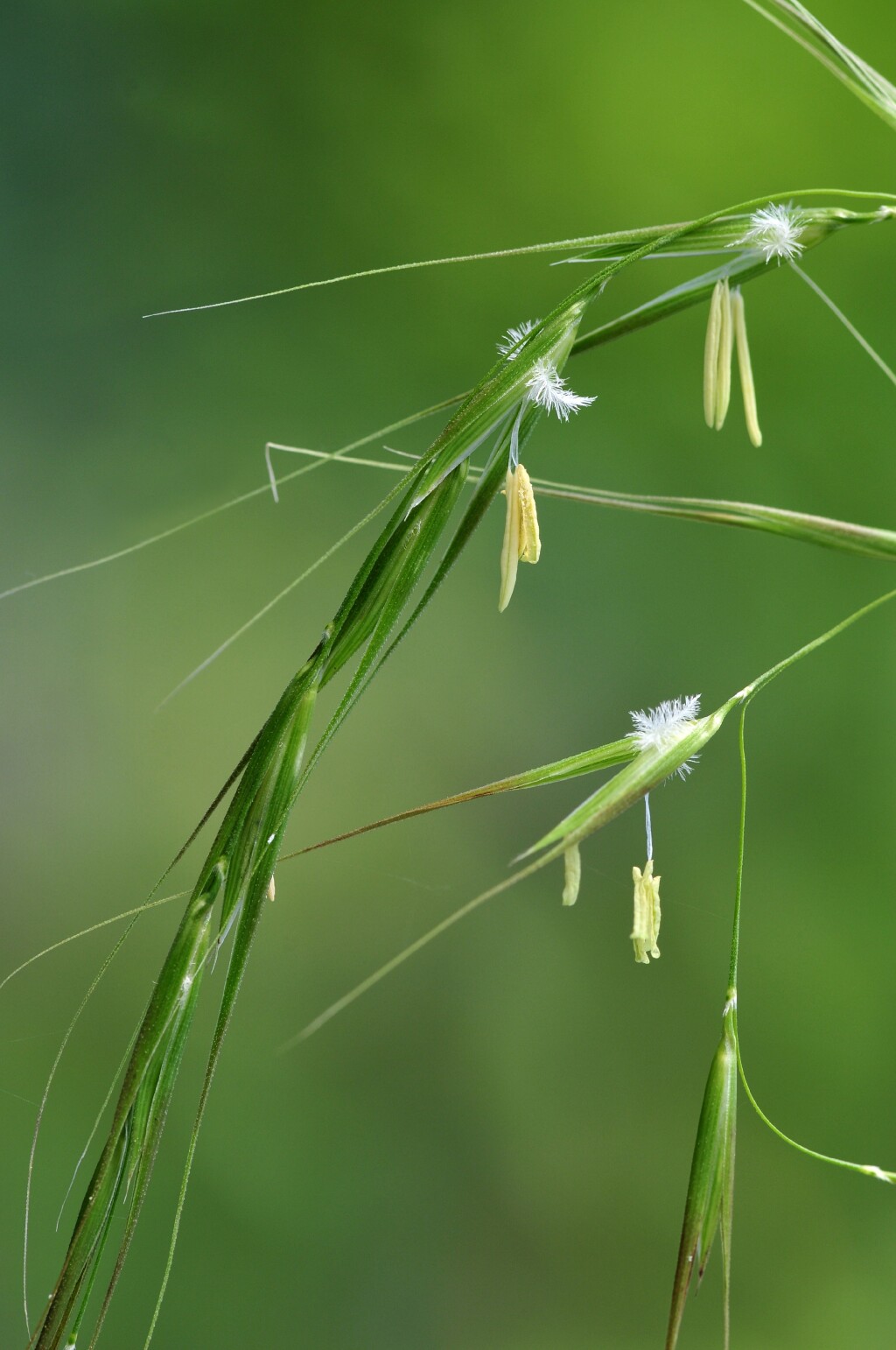Microlaena stipoides var. stipoides
Weeping grassRhizomatous perennial, tufted or mat-forming, culms ascending, to 1 m high. Leaves semi-spreading; blade flat, 2–20 cm long, 1–12 mm broad, smooth and glabrous, scabrous or sparsely to copiously hairy; ligule a minute, membranous rim, less than 0.5 mm long; summit of sheath auriculate, usually with a few long hairs on the lobes. Inflorescence a narrow raceme or panicle, 5–18 cm long, weeping when fully expanded. Spikelets 13–40 mm long (including awns), green to dark purplish-brown, subsessile or with pedicels to 1 cm long; glumes 0.2–2.0 mm long, the lower usually about half as long as upper; callus 1–2 mm long, with a tuft or short bristles at base; lower sterile lemma generally shorter than upper, with awn shorter than, to much longer than body; awn of upper lemma at least as long as body, both awns scabrous, 5–7-nerved; fertile lemma slightly shorter than body of upper sterile lemma, keeled, acuminate, smooth; palea very narrow, from one- to two-thirds as long as fertile lemma; stamens 4. Flowers all year but mostly Oct.–Mar.
LoM, Wim, GleP, Brid, VVP, VRiv, MuF, GipP, OtP, WaP, Gold, CVU, GGr, DunT, NIS, EGL, EGU, WPro, HSF, HNF, OtR, Strz, MonT, HFE, VAlp. All States. New Zealand. Occurs in a wide variety of natural habitats, also gardens, lawns and pasture.
An extremely variable species, occurring as solitary tussocks, small colonies or natural lawns which are commonly grazed by native and introduced mammals. A low-growing, particularly hairy form has been collected near Marlo in East Gippsland.
Walsh, N.G. (1994). Poaceae. In: Walsh, N.G.; Entwisle, T.J., Flora of Victoria Vol. 2, Ferns and Allied Plants, Conifers and Monocotyledons, pp. 356–627. Inkata Press, Melbourne.
 Spinning
Spinning


